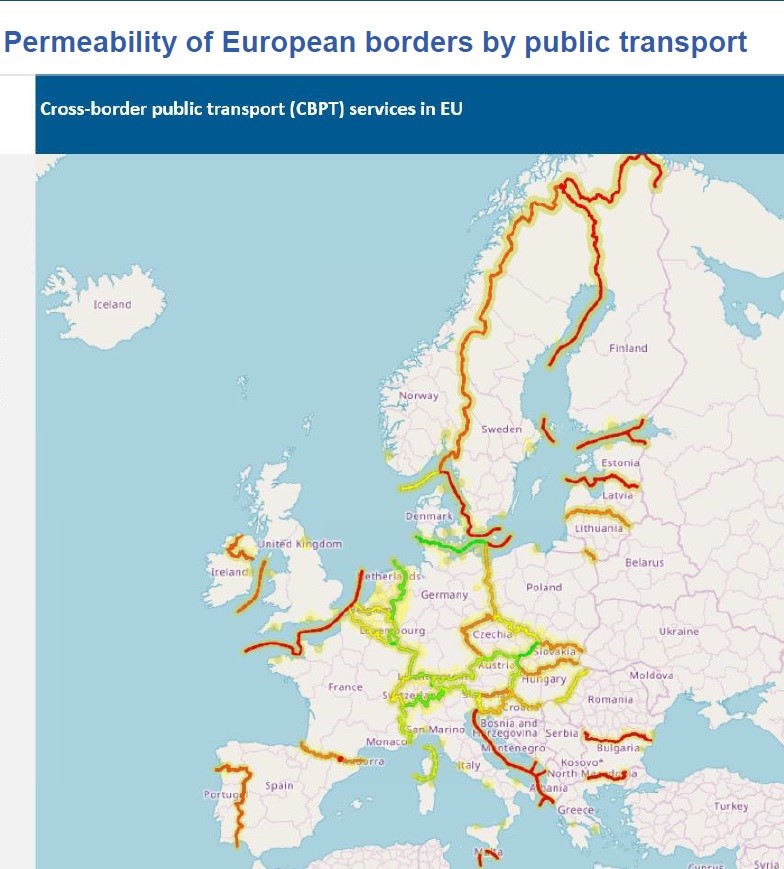Major Study on cross-border public transport

date: 03/02/2022
See also: Check out the complete study!
30% of the EU population lives along internal borders, their prosperity depends on cross-border accessibility. Otherwise individuals and organisations are hampered from interacting in the territory close by. Cross-border public transport (CBPT) is central to this.
This is why DG REGIO commissioned this study: to provide regions with tools to assess the availability of public transport across their borders, and to improve existing services or launch new ones.
Beyond the study itself, it includes.
- a web-viewer showing existing CBPT routes (trains, buses, trams and ferries);
- an inventory of obstacles (legal and administrative) affecting CBPT today;
- 31 case studies on CBPT services regarding their context, business-model, provision, obstacles and solutions;
- A toolbox showing potential solutions to overcome some of those obstacles.
We invite all Interreg stakeholders to see one of the study’s innovative aspects, i.e., the analysis of permeability. The reasoning is that it is not enough to assess the supply of public transport (= number and frequency of CBPT). Supply needs to be contrasted with potential demand (e.g. population). This gives you permeability.
Do you have a clear image of the needs of public transport along your border? Perhaps this study can help you in the analysis.
The report also identifies 57 obstacles to CBPT service provision, the majority of which are of an administrative (roughly 60%) or legal nature (20%). The causes, consequences and possible solutions to these obstacles are analysed. Hopefully this could help public transport authorities and operators to avoid falling over the same hurdles.
31 specific CBPT services are analysed in separate case studies. Due to their heterogeneity it is likely you’ll find one related to a border near you, or from elsewhere but challenged by similar obstacles to yours.
